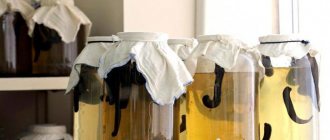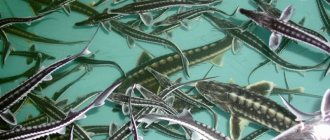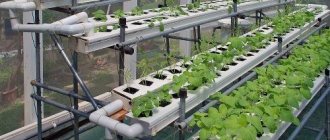The 21st century is the era of development of environmentally friendly businesses. Reasonable consumption, waste sorting and making a profit from recycling various types of waste are becoming fashionable. Russia is just beginning to join the scheme of new thinking. One of the areas that may be of interest to businessmen is the plastic recycling business. There is no competition in the segment yet; the raw material base is huge and is regularly replenished. The main advantage of a plastic recycling company is protecting the environment from the harm that PET bottles lying in a landfill could cause.
Basics of organizing a polymer recycling business
The first reason for the slowdown in the launch of waste recycling is the lack of habit among Russians of living in a clean space. It is worth comparing our cities with European ones, and you will understand the difference. Anyone who is just starting to travel and has chosen a course for developed countries will experience disappointment upon returning home - the comparison is clearly not in our favor.
There is no culture of waste sorting in Russia. Raw materials for the described business are thrown away along with other types of waste.
At the first stage of opening a business aimed at recycling plastic, you should start accumulating raw materials, sorting and studying their varieties in order to know what is recycled.
Where can I accept plastic for recycling?
As noted a little above, you need to start looking for suitable premises. If in Europe it is a real problem to find an empty factory or workshop, then in Russia nothing is easier. There are a large number of buildings that have stood idle since Soviet times. You need to focus on an area of 300 square meters. This will be quite enough to install all the equipment, as well as organize a small warehouse for storing raw materials and finished products.
But do not forget that in the case of an abandoned building, you will need to restore or conduct communications yourself. If you have available funds, then you can rent a premises that is ready to open, but you will have to spend a lot of money. Another option is prefabricated hangars. This is a good solution if you need to open as soon as possible and don’t have time to search.
Room for organizing recycling
If you heed the advice to start a business with sorting waste, at first it will be enough to rent 50 m2 of space. This is enough to initially start the process.
If you intend to purchase a press, you need to add another 20 m2 to the existing 50 m2. The larger the equipment, the larger the area for its installation should be. Installing a full-cycle mini-plant will require, at the most conservative estimates, at least 140 m2. When it comes to deep processing of plastic raw materials, about 1,000 m2 of space will be required to accommodate equipment and warehouses for finished products and the materials from which they will be made.
Important: The deeper the plastic processing, the more profitable the enterprise.
Depending on the plans for organizing the production process, space will be required for:
- organizing a sorting workshop and primary processing - 100 m2;
- washing and crushing plastic – 500 m2;
- thermal processing and creation of a secondary granulator – 100 m2;
- manufacturing products using a polymer regenerated granulator with the condition of installing one unit of equipment - 100 m2.
An area of 1,000 m2 is needed not only to accommodate equipment. Extensive space is required in order to have somewhere to store the intermediate fraction.
Technology for recycling plastic and recycling its waste
Technological progress has made human life easier in many ways. But at the same time it brought new problems. Thus, in recent years, a huge number of plastic items have been produced: bags, disposable tableware, bottles, containers and containers - the list is endless. But only about five percent of the total volume is recycled, and the rest ends up in landfills.
Plastic waste problem
To understand the scale of the tragedy, let's look at the facts:
- Every year about a million animals and birds die because of it;
- About 80% of seabirds are unable to distinguish between waste and prey. As a result, debris enters the gastrointestinal tract, causing painful death;
- Almost half of all waste is concentrated within the world's oceans. The landfill on its surface is visible from space and is called the Great Pacific Garbage Patch.
It is not possible to completely phase out all types of products made from synthetic materials. That is why the main tasks are: proper disposal of plastic and recycling. How long does it take for plastic to be recycled in nature?
The process of decomposition into simple compounds of synthetic materials takes an extremely long time. Each type of plastic has its own specific interval. For clarity, let’s look at household, frequently used items:
- plastic bags, bags that you can take from the nearest supermarket decompose up to 500 years. The exception is modern packaging that has a recycling symbol;
- soda bottle – up to 400;
- diapers, feminine sanitary pads – up to 300;
- coffee cup – 50;
- cocktail tube – 200;
- plastic cutlery – up to 1000
This is not a complete list. The average for plastic is 300-500 years. Hundreds of millions of tons of such waste are dumped into landfills around the world every year. The ground beneath them does not receive oxygen, nutrients, or sunlight. All vegetation and insects die. This is just a superficial description of the problem. Danger of plastic waste for the environment and humans
Plastic products have a negative impact on the environment and lead to the death of flora and fauna. In addition, when synthetic materials enter the gastrointestinal tract along with food, they also poison the human body. They carry with them dangerous compounds such as pesticides and bisphenols.
Particles of high-molecular synthetic compounds, which are plastic, when entering the body, have a negative effect:
- Cell growth and renewal slows down.
- The lymphatic system suffers due to the abundance of toxic substances.
- Immunity is weakened, protective reactions to viruses, harmful bacteria, and infections are reduced.
- The functioning of the gastrointestinal tract deteriorates.
- The composition of the blood changes.
- Recovery processes slow down.
- Aging progresses.
Moreover, it is not at all necessary that the particles enter the body with food. There are plastic elements in the air, water, and common household items. Benefits of Recycling Plastic Plastic recycling should become a common, natural process. As a result, the negative impact will be reduced. In addition, two important aspects will appear.
The first, and most important, is the environmental benefit. The technology and production scheme will be designed in such a way that all waste will be recycled. Then the number of items made from non-degradable materials in landfills will be significantly reduced. This will have a positive impact on the overall state of the environment.
The second is business benefits. Recycled plastic can be reused and significantly reduce production costs. In addition, large producers using recycled product can enter into cooperation agreements with collection points. Then a huge number of people will be involved in the circulation of plastic waste. In addition, this will contribute to the growth of the population’s well-being - after all, it will be possible to receive some kind of reward for donated recyclable materials. What can plastic be recycled into? Recycled plastic should become a secondary raw material for the production of other things. From it you can get:
- synthetic fiber - nylon, organza, taffeta, polyester - for sewing clothes;
- footwear base: heels, soles;
- lids for various containers;
- housings for electronic devices;
- household equipment: brooms, mops;
- garden tools: rakes, scoops;
- boxes for storing various things;
- ropes, shopping bags;
- pieces of furniture;
- components for bicycles, scooters, rollers;
- carpets and artificial turfs.
These materials have also found application in construction. They are added to asphalt road surfaces, concrete, and are void fillers for insulation. Plastic recycling methods There are several methods for recycling plastic. Specialists have several methods at their disposal. They differ depending on the types of plastics. They can be identified by special markings:
- RET: containers, bottles and containers.
- REND: food containers and food storage containers.
- PVC: furniture parts, decorative items, pipe components.
- LDPE: bags, garbage bags, cling film.
- RR: toy parts, auto parts, some food packaging.
- PS: dishes, stationery.
- Others: computer disks, lenses, glasses, construction elements, various industries.
It turns out that modern technologies make it possible to work with a huge amount of material. Pyrolysis to produce liquid fuel Recyclable materials can become the basis for fuel. This happens when using a method such as pyrolysis. In this case, with the help of equipment, certain conditions are artificially created: high temperatures (over 600 degrees), pressure, low oxygen concentration.
Under the influence of these factors, the material liquefies and acquires a new structure. As a result, fuel oil, gas and thermal energy are obtained. Cleaner fuel can be obtained through multi-circuit pyrolysis. Hydrolysis to produce PET granules Hydrolysis occurs in the complete absence of oxygen - under vacuum conditions. In this case, small particles of the substance are broken down under continuous exposure to a solution of acids of a certain concentration, high temperature and water. The output is PET granules.
This method is considered costly in terms of energy and resources. Therefore, it is used only for large volumes. Glycolysis to produce oligomers and BOET. Processing with this approach is carried out under the influence of dihydric alcohols and high temperatures. The resulting raw materials are used to produce parts that do not come into contact with food. Typically used for casting plumbing components and various pipes. Methanolysis for the production of PTEF Methanolysis is most used for the production of thermoplastics - polyethylene terephthalate. The breakdown of recyclable materials into simple compounds occurs under the influence of high temperatures and catalysts - substances that significantly accelerate the rate of chemical reactions.
The only drawback of this method is its high explosiveness. Therefore, in production they prefer to replace it with another. Mechanical recycling Mechanical recycling consists of several stages:
- waste sorting;
- grinding;
- washing;
- drying.
The resulting raw materials are used to make new items, in particular PET bottles. Methods for recycling plastic waste But not all plastic products can be recycled. Then the question arises of how plastic is disposed of. Disposal of plastic waste is traditionally carried out in two ways: incineration and landfilling. Incineration The most common way to profitably dispose of plastic waste is incineration. As a result, heat is released which can be used for heating. But at the same time, toxic compounds are released, which, when released into the atmosphere, upset the natural balance. Therefore, it is important to use cleaning filters. Burial at a landfill Burial at a landfill also cannot be called the right way. The waste also continues to rot in the soil, poisoning it with toxic substances. Subsequently, these soils are unsuitable for growing crops and plants.
As we can see, recycling plastic waste is not safe for humans and the environment. Therefore, the solution to the problem of plastic waste is to create materials with a low decomposition period, as well as organize separate waste collection, expand collection points and create recycling enterprises.
What equipment will be required?
The first thing you should take care of is the manufacture or purchase of a compactor or press. PET bottles take up too much space, so you need a device to compress them.
At first, it will be cheaper to buy used devices.
The minimum for organizing a deep processing cycle consists of the following devices:
- an impact crusher will cost 300,000.00 – 600,000.00 rubles;
- a rotary dryer will cost 100,000.00 – 800,000.00 rubles;
- roller shredder - price varies from 400,000.00 to 800,000.00 rubles;
- polymer extruder – cost ranges from 1,000,000.00 to 20,000,000.00 rubles;
- a strand granulator costs from 1,500,000.00 to 5,000,000.00 rubles;
- polymer agglomerator – minimum price 800,000.00 rubles, maximum – 1,500,000.00 rubles;
- flocation washing – cost 1,500,000.00 – 10,000,000.00 rubles.
Financial calculations: business plan for pellet production
Financial calculations include the cost of renting premises, purchasing equipment, wages, transportation costs, purchasing raw materials and sales.
Financial plan for the production of plastic granules with a capacity of 8000 kg per shift with a single-shift plant operation:
- purchase, delivery, installation and assembly of equipment – RUB 6,800,000;
- purchase of raw materials for a month of work - 192 tons at 7 rubles / kg will amount to 1,344,000 rubles;
- the cost of a ton of finished products on the market is 40,000 rubles;
- per shift, the equipment produces flakes worth 320,000 rubles, consuming raw materials worth 56,000 rubles;
- in a month, granules will be produced in the amount of 7,680,000, raw materials will be spent for 1,344,000 rubles;
- to service the equipment, you need 1 qualified mechanic with a salary of 30,000 rubles, 2 production line operators × 20,000 rubles, 2 loaders × 15,000 rubles, a director with a salary of 40,000 rubles;
- the cost of settlements with personnel per month will be 140,000 rubles, charges to the budget and extra-budgetary funds in the amount of 30% - 42,000 rubles, the total wage fund - 182,000 rubles;
- electricity costs – 15,000 rubles;
- rental of premises – 30,000 rubles.
Total monthly expenses – 1,571,000 rubles. Cost of products sold – RUB 7,680,000. Thus, provided that all finished products are sold, the costs of purchasing equipment will be recouped already in the second month of operation.
Staff
Before opening a plant and running it, you need to find people who will work in the enterprise.
To organize the technological process you will need:
- loaders – 5-6 people;
- production controllers – 2;
- manager – 1;
- accountant - 1.
If you have the finances, you can hire a cleaner. If not, arrange an additional payment for cleaning to one of the employees.
Important: One of the attractive aspects of the business of processing PET materials is that there is no need to look for highly qualified specialists.
Recycling plastic waste: technology and features
Let's look at how, in fact, everything happens. The whole process can be divided into several simple stages. The first thing you need to do is sort. This is done manually. Workers should separate colored plastic, clear plastic and brown plastic. This is due to the fact that at the end we must get a product of the same color, otherwise the cost of the batch will decrease significantly.
Foreign objects such as rubber or paper must be removed manually. At the end of the sorting process, plastic containers are loaded into the line. Processing itself does not take much time, although it all depends on the productivity of the equipment, so it can be either a ton per hour or 200-300 kilograms.
The line consists of several connected units. At the first stage, the caps and labels are separated, after which the raw materials enter crushers, where they are crushed with knives and transferred further along the conveyor. Next is a washing machine, which uses hot water to remove not only dirt, but also unnecessary crushing residues. Then the plastic undergoes polishing and rinsing, and comes off the assembly line already cleaned. Flex gradually accumulates in a bunker, from where it is then unloaded and sorted.
Where to get raw materials?
Sources of raw materials are:
- landfills;
- sleeping areas of cities;
- reception points.
In the first case, you should contact the administration of the landfill and conclude an agreement on the supply of PET bottles.
In the second case, it is worth installing special containers for PET containers in densely populated areas of cities. The issue should be agreed with the authorities. They will not object, since your activity will be an item in their plans for the implementation of environmental programs.
When opening your own container collection point, keep in mind that our citizens will only return dishes for money. 1 kg. plastic costs about 13.00 rubles.
General useful information
Since PET bottles can be produced very cheaply, their production is unlikely to cease in the coming years. Such plastic waste is accepted for mere pennies, so it is much easier to throw the plastic away with the garbage rather than take it to a collection point. Huge dumps of bottles and other products appear.
It is worth drawing your attention to the fact that a plastic product itself takes about 200 years to decompose. Since this business will be based on the processing of secondary raw materials, it is very cheap. This kind of business is quite easy to open. This is due to the fact that the state will help you in all possible ways.
Plus, in most cases, you won't need to spend money on purchasing raw materials. It is possible that you will even receive a small percentage for recycling a certain amount of plastic waste. Let's look at some basics of this business and take a closer look at the process line and profitability.
List of documents required to open a business
Any business affects the interests of those who live in the territory of its opening. Often, a garbage business requires licensing and obtaining permits from many permitting agencies.
To open an enterprise that processes PET bottles, it is enough to register as a legal entity and collect papers indicating that you work in accordance with legal regulations, pay taxes, etc.
Licensing for recycling of plastic containers
To start a plastic processing plant, there is no need to obtain a license and collect a package of permitting documentation. Production of the described type is not hazardous to the environment.
Shoes made from bottles and other recycled plastics
There is no significant difference between the production of shoes from primary and secondary raw materials. The equipment is the same, the production technologies are identical. The only difference is the type of raw material.
Factories of leading shoe brands have mastered knitting seamless shoes from polymers on a 3D printer. The entire piece of shoe is knitted at once exactly according to the given dimensions. There are no scraps that are formed during cutting; there is no need for laces, rivets and other accessories. Knitted in three dimensions, sneakers and loafers made from recycled bottles are lightweight and comfortable on the foot. Some Nike and Adidas shoe models are made from 95-100% plastic waste.
We recommend reading: Equipment for meat processing shops and factories
Timberland uses recycled polymers in its insoles and laces. The outsole is made from recycled rubber. H&M, Patagonia, G-Star RAW also use recycled plastic in shoe production.
Shoe manufacturers have proven that caring for the environment combines comfort, style and high technology.
Enterprise business plan
In the 21st century, a business plan is where any activity begins. Its goal is a preliminary determination of all income, expenses, risks, etc. This is a model according to which the enterprise will operate. With the help of a well-drafted business plan, you can determine when investments in recycling plastic containers will pay off and you will begin to receive net profit from the business.
Income, expenses and payback
If we take the production of large-mesh polyethylene mesh as a basis and calculate profits and costs, we get approximately the following figures in rubles:
- expenses for the purchase of minimum equipment – 3,000,000.00 rubles;
- rent of an area of 200 m2 – 60,000.00 rubles (depending on the region);
- salary – 120,000.00 rubles (for 4 employees);
- production costs, electricity costs, etc. – 100,000.00 rubles;
- 24-hour work will allow you to receive a gross annual profit of 31,000,000.00 rubles;
- price of recycled pellets per year – 24,800.00 rubles;
- business profitability before taxes – 2,840,000.00 rubles.
As a result, we get that the production of large-mesh polyethylene mesh is an activity that will pay off within 3-4 years at minimal cost.
Plastic clothes
Gone are the days when natural fibers were considered unequivocally good and synthetic fibers were considered bad. Modern synthetics do not prevent the skin from breathing and are comfortable to wear. Chemical fibers are indispensable in the production of sports and elastic clothing. They are also added to natural fibers - cotton, linen, wool, as well as artificial fibers (viscose) to increase wear resistance. Among the clothes made from recycled plastic you can find:
- stretch jeans;
- fleece sweaters;
- elastic underwear, bodysuit, tights;
- glasses frames;
- shoes, hats, accessories;
- artificial fur;
- vinyl dresses, jackets, overalls.
Polyester
In the 21st century, polyester clothing has become more common than cotton clothing. This fiber, in its pure form or mixed with others, is a leader in the production of sportswear, including swimsuits. They also make things from polyester for everyday wear - from blouses to jackets.
Recycled polyester clothing is more environmentally friendly than cotton: chemical fertilizers and pesticides are used in the production of the latter. A large amount of water is wasted to irrigate cotton fields.
We recommend reading: Neutralization of mercury: how to neutralize it at home?
Nylon
Nylon is a synthetic polymer fiber. Some companies make it from recyclable plastic. Recycled nylon is found in the following products:
- women's nylon stockings and tights;
- rayon;
- parachutes, ropes, life jackets.
The advantages of nylon are lightness, resistance to damage, and high stretchability.
Organza
Organza is a thin translucent fabric made by weaving polyester and nylon. They sew elegant and wedding dresses from it, make capes and bows.
Curtain organza replaced tulle. It is this that plays the role of the basis in decorating windows with curtains.
Taffeta
Taffeta was originally made from silk or cotton. Currently, they have been replaced by synthetic fibers, including those from fishing nets, PET bottles and other polymer containers. This durable, wear-resistant fabric with a slight natural shine is used as an interior fabric: curtains, bedspreads are sewn, chairs and sofas are upholstered. There are wedding and evening dresses made of taffeta.
What product is obtained from recycled raw materials?
Plastic recycling provides the market with materials for the manufacture of:
- fabric base for padding polyester, textiles, carpets and clothing;
- films;
- parts for electrical engineering;
- soundproofing materials;
- fibers;
- new bottles;
- parts for vehicles;
- containers for chemicals;
- bristles, etc.
Areas interested in recycled plastic
Even before recycling, plastic is sorted by color. Separate recycling of raw materials allows you to improve the quality of the resulting product. Depending on the type of product produced, it can be sold to enterprises engaged in:
- production of paving slabs and tiles;
- production of packaging and food plastic;
- production of chemical fiber;
- production of plastic containers.
The cost of the product depends on its color. A ton of colored material will cost 15,000.00 rubles, transparent - 20,000.00 rubles, brown - 10,000.00 rubles.
Other things made from plastic waste
A bottle without a cap is used to produce new clothes, shoes, insulation for sleeping bags and coats. The following are made from separated plastic caps:
- new caps for bottles and canisters;
- car battery housings;
- gardening and household tools: rakes, scoops, brooms;
- storage boxes;
- ropes, yarn, bags.
Not only small household and office supplies are produced from recycled materials. Russian companies produce sleepers from recycled plastic. 170 tons of plastic waste are converted into 1 kilometer of railway tracks. Plastic sleepers are stronger than wooden ones and 3 times lighter than reinforced concrete ones. They are easy to install, last 40-50 years, after which they will be recycled into new sleepers.
In the USA, bridges are being built from plastic waste. So far these are small structures up to 100 meters long. 80% of the bridge structures are made from polymer bottles, the remaining 20% are former car bumpers and dashboards.
Fences, manhole covers, even paving slabs - these products made from recycled plastic save from the proliferation of landfills, serve for a long time, and after wear and tear are sent for another recycling.
Furniture
For many, the expression “plastic furniture” is associated with cheap, unstable chairs and tables, which were found in outdoor cafes in the 90s of the last century. But today, polymers are used to make high-quality and elegant furniture that can become an interior decoration.
Furniture made from recycled plastic looks no worse than wood. At the same time, they do not have the disadvantages of wooden products: they do not need to update varnish and paint, do not rot, and are resistant to dampness and insects.
Wooden, metal and concrete benches in parks and alleys are being replaced by benches made from recycled plastic. They are practical, durable, varied in color and shape. Plastic bins do not rust, unlike metal ones. Recycled plastic equipment is found in playgrounds.
Bicycles
In 2011, artists from Uruguay produced the first plastic bicycle frame using 200 bottles. Having supplemented it with the necessary parts, the authors received a lightweight, durable, corrosion-resistant bicycle. Following his Uruguayan colleagues, a designer from Korea proposed replacing the standard frame with a plastic triangle.
We recommend reading: Rules for conducting public environmental control
With mass production, such a move will greatly reduce the cost of bicycle production. Around the world, followers of the recycled plastic frame pioneers are making similar bicycle parts.
Roads
Holland never ceases to amaze with innovations in road construction. After 3D printed bridges, they invented a road made from recycled plastic. Smooth and durable, the polymer road does not heat up or melt in the sun, unlike asphalt. For repairs, it is enough to replace one or more modules with new ones, and take the worn ones for recycling. The road concept is being studied and finalized.
More conventional roads are made by adding plastic granules to rock and bitumen. At the same time, several times less bitumen is required than in traditional asphalt roads. So far, several kilometers of routes with polymer granules have been laid in the UK.
Perhaps in 10 years, road surfaces made from recycled plastic will become a reality in our country.
Carpets
Polyester and polyester carpet products are made from plastic bottles. These materials themselves are suitable for subsequent processing. Polyester carpets are durable, easy to clean, and come in a variety of colors and patterns.
Technology used in the processing process
Even before creating a business plan and searching for a market, those who decide to engage in plastic processing should clearly understand what the technological process is. It consists of the following stages:
- Collection of used plastic and delivery of raw materials to the workshop.
- Manual sorting.
- Removing foreign elements.
- Crushing and pressing.
- Processing, which begins with loading PET containers into the conveyor.
At the end of the production chain, flexible plastic flakes will be obtained, suitable for the manufacture of plastic objects.
Let's look at the stages in more detail.
Collection of used plastic and sale of the finished product
As noted above, it is best to collect raw materials in all possible directions: containers, acceptance points, contracts with landfills, etc.
Every city has catering establishments. It is worth negotiating with their managers to purchase used plastic utensils from them. Most companies will be happy to not only solve the waste problem, but also make money from it.
In the plastic recycling industry, collecting raw materials is a more difficult task than marketing the resulting product. Finding someone who is ready to buy a large wholesale batch of flex is not difficult. You can submit an ad and interested business representatives will immediately make themselves known.
Sorting
Until they come up with equipment that can recognize different types of plastic, this function is performed by people. The sorting process is quite labor-intensive and time-consuming. The workers are faced with the task of sorting the raw materials into colors:
- brown;
- green;
- transparent;
- blue.
Its cost depends on the color of the flex. The most inexpensive is brown. It is also the highest quality. The reason for the low cost is that there is no technology to dye raw materials from brown to other colors. They will pay the most for the transparent one, since it is universal and can be painted in any color.
Washing
After the material has been sorted, it must be washed thoroughly. What comes from landfills and collection points contains many foreign objects. Even clean bottles have labels and caps that need to be removed.
Washing is carried out with an aqueous solution containing caustic soda. On the eve of washing, the plugs and rings are removed from the dishes. In purified form, it undergoes crushing and granulation.
Granulation process
You can sell flex, but granules are a more valuable raw material. To obtain them, purified raw materials, which are flakes 12-20 mm in size, are dried in a centrifuge.
The further processing process is as follows:
- The cereal is heated to 280°C.
- The molten mixture is drawn into fibers.
- The strips are cut into granules of equal size.
Irreversible disposal of plastic, burn or recycle?
If there are no recycling plants within reasonable accessibility, there are two other ways to manage plastic waste: it can be taken to a landfill (landfill) or burned.
These methods of waste management have been the main ones in Russia for a long time. Garbage, including plastic, can be burned in special plants. There are currently ten large waste incineration plants in Russia.
At an incineration plant, plastic waste is destroyed in special tanks or ovens at temperatures of about 1000 degrees Celsius. Such heating destroys all organic compounds. The thermal energy obtained from combustion can be used for external needs or for the plant itself.
This is what a waste incineration plant that does not use cleaning filters will look like. The picture is deplorable.
The disadvantages of such waste management are obvious:
- The price of thermal energy from burning waste is approximately five times higher than an equal amount of energy from using thermal and power plants.
- Most plastic waste burns well, but many types of plastic (all PVC and PS products) release toxic substances when burned. If there is a lot of such plastic in the total mass of waste being burned, the plant either spends money on additional filter systems or releases poison into the atmosphere.
- Ash and slag (so-called ash and slag waste) remaining after combustion also contain toxic substances.
- Plastics are obtained from oil and natural gas, and their reserves on the planet are not unlimited. Burning plastic that can be recycled back into the cycle of consumption and production is irrational and wasteful.
Incineration may be justified in the case of other waste , but destroying plastic, something that can be recycled and used, is what is really unprofitable.
Important! Annual losses (including lost profits) from the poor development of waste processing amount to about two hundred billion rubles. This amount is twice as much as the costs for housing and communal services and environmental protection included in the budget plan.
Developing an industry for recycling plastic instead of burning it will allow national income to increase by 20% in the long term and free up landfill space.
Profitability, prospects and demand for the plastic waste recycling business
According to various sources of information, from 6 to 18% of used plastic is recycled in Russia. Everything else goes to authorized and unauthorized landfills, where it will decompose for hundreds of years. Those who drank cola will long be dead, and the container they used will remain as evidence of the thoughtlessness and short-sightedness of our generation.
Recycling plastic is a noble endeavor in every way. In Europe today up to 80% of this material is recycled. This suggests that in the West the competition in the segment is serious. Everything is much simpler here. By purchasing a ready-made business or starting a business from scratch, you will immediately understand how promising this business is. Its distinctive features in Russian conditions are:
- weak and sometimes absent competition;
- raw materials are available in huge quantities and are cheap;
- simple workflow.
If we add environmental conservation to the above, we get a promising business with a future.
Important: Pay attention to what environmental programs are being implemented by the authorities in your region. If you become a member, you can get business premises for free, as well as other benefits.
About plastic processing in Russia
In Europe, America and some Asian countries, recycling plastic and other types of waste is a standard automated process. Separate collection and recycling of plastic waste has been taking place in their cities for a long time. The government monitors compliance with environmental standards and the level of environmental pollution.
How is this going in Russia? In Russia, the waste disposal system is not so developed, and there are not enough factories for processing plastic into useful recyclable materials. On the same level with the organization of plastic recycling (or rather, its absence), there is the level of awareness of the country’s residents. Not everyone pays attention to environmental issues and recycles plastic waste.
Separate containers for separate waste collection are rarely found on Russian streets. Solid waste collection points help out, where they accept scrap plastic and metal, film, paper and glass. The percentage of Russian residents who independently sort household waste is very small.
In January 2020, a law on separate waste collection came into force in Russia, which implies the development of the sphere of plastic waste disposal and the production of recyclable materials. The government is starting to fund recycling companies and build factories with the necessary equipment to process plastic and other waste.
Owner reviews
Thanks to the Internet, novice businessmen have the opportunity to get acquainted with the opinions of people who are already involved in plastic recycling. Here are some of them:
Edward:
“Since my youth I dreamed of having my own business. My wife and I saved up enough money to start. She is an ardent Greenpeace supporter, so the first area she paid attention to was the processing industry. We chose plastic because there is a lot of raw material, and a license is not needed. We bought used equipment and hired workers. For the first six months, everything went wrong. There were problems with both equipment and personnel. Hanging by a thread. They paid off in about 3 years. Some of the equipment was replaced. We plan to replace everything and expand the staff.”
Andrey:
“We were partners with a friend. A small plastic processing plant was for sale. We bought it. The owner is an acquaintance, he left for Europe for good, where he also has a business. So we decided to buy his established business. Everything turned out to be much more complicated than we thought. For the first 3 months we hung on the wire and pestered the former owner with questions. Now I understand that in order to open a business, you need to work at least a little in the field.”
Kira:
“Plastic recycling is a new direction for Russia. There are many pitfalls that you learn about once the process is started. I owned the plant for about a year and sold everything until I went bankrupt. The successors were luckier. We’ve stayed afloat and are building momentum.”
Examples of finished projects
One of the most successful projects in the Russian Federation for plastic processing was the enterprise “Southern Federal District-Recycling” of Roman Sebekin.
He went a little further than other entrepreneurs. At his enterprise, plastic is not only processed, but also used to produce a wide range of building materials. Roman's own house is built entirely from recycled plastic . His ideas became interested abroad. The businessman's enterprises operate in the USA, Great Britain, Pakistan, and Ghana.
The goal of “Southern Federal District-Recycling” is not just the recycling of plastic, but its use as cheap and lightweight materials.
The company's mission is to minimize plastic waste pollution on the planet.
Roman opened his first enterprise back in 2003, it paid for itself in 6 months. Without loans, government support, only on our own. Now Volgograd is Sebekin’s hometown, one of the leaders in separate waste collection, which was once organized by Roman. From all over the Southern Federal District, enterprises and residents bring plastic waste to his plant for processing. In his homeland, Roman is called the “garbage king,” but he is proud of this title.
About Roman Sebekin’s business in the video:
Collection of material and its sorting
Recyclable materials accepted by the enterprise are subject to sorting. PVC containers and PET packaging are stored separately. Then they are divided by color:
- The most expensive raw material is transparent; anything can be made from it.
- Bright red and yellow containers must be recycled - they contain dyes, so they cannot be recycled.
- The most durable products are obtained from black and brown PET packaging.
In addition to plastic, the Southern Federal District-Recycling enterprise now organizes the collection of foam plastic, used building materials, used pallets and other wood products.
Processing methods
Plastic can be recycled in several different ways. Depending on the chosen method, the final physical and chemical properties of the products and their scope of application differ.
- Hydrolysis. Plastic is broken down using acids at high temperatures.
- Glycolysis. Recycling waste by heating with alcohol.
- Methanolysis. Plastic recycling occurs under the influence of ethanol under high pressure.
- Pyrolysis. Heat treatment without access to oxygen.
- Mechanical processing – crushing, grinding.
Important! In the Russian Federation, only the last method is widely used, despite the fact that the first four are the most environmentally friendly. However, they require expensive equipment and technology; domestic business is not ready for such investments.
Full cycle
This approach implies that at the output the company sells not a semi-finished product in the form of granules or flakes, but specific products. Most often, our processing companies produce building materials from recycled materials - tiles, building blocks, paving slabs. Another type of finished product is non-food plastic products (barrels, canisters, plumbing pipes).
Production of products from polymer materials
Most enterprises producing polymer products use primary raw materials. Only a few entrepreneurs are involved in plastic recycling. Despite the fact that there are enormous opportunities here. You can make it from recycled plastic:
- furniture;
- stationery;
- components for the automotive industry and machine tool industry;
- workwear;
- construction and cleaning equipment.
Advantages and disadvantages of waste recycling
The advantages of any processing business include:
- Protection of Nature;
- weak competition;
- availability of raw materials;
- high profitability;
- great prospects for the future;
- opportunity to participate in state environmental programs.
If you choose to recycle PET, an important advantage is that there is no need to obtain a license.
The disadvantages include:
- The difficulty of starting a business. This can be applied to opening any business in Russia.
- Use of manual labor. Not every person is ready to work with dirty waste.
- It is difficult to arrange the supply of raw materials.
Let's hope that over time there will be fewer disadvantages and more advantages. After all, we are talking about an important and necessary matter.
What you need for self-recycling
Recycling is a very labor-intensive process that requires a special approach. Devices and machines come to the rescue. However, having learned the price of an exclusive device and its size, many begin to wonder if it is worth it. After all, even huge factories with millions in profit have a low profitability percentage. But here you need a device worth 200 thousand rubles, and sometimes even more than one.
Crafts and invention help out enthusiasts. The fact is that you can assemble the necessary devices by using scrap materials or remaking household appliances. Basic machines for recycling plastic with your own hands:
- Shredder.
- Agglomerator.
- Extruder.
Each of the devices is designed to perform a certain process on the container’s path to a new life. Some tasks will not require special equipment. Shredding, for example, can be done with ordinary scissors or a tape cutter. Such a tool is made from a knife and washers mounted on a horizontal static object. They use it to cut plastic bottles into plastic thread.
The shredder is made of a drill and grinder discs, secured with intermediate washers. With this device you can quickly shred a huge amount of containers in a short time. A small amount of the starting material can be cut with ordinary scissors. The product after this treatment is called “flex”.
Agglomerator is a device for sintering. At home, even an oven can be used for this purpose. But you should be careful. It is better to abandon such an idea in favor of cheap homemade analogues. They can be ordered from craftsmen who will quickly produce the required unit.
An extruder is a kind of chamber, passing through which the mass takes the form of a thread or other shape and is cleaned.











